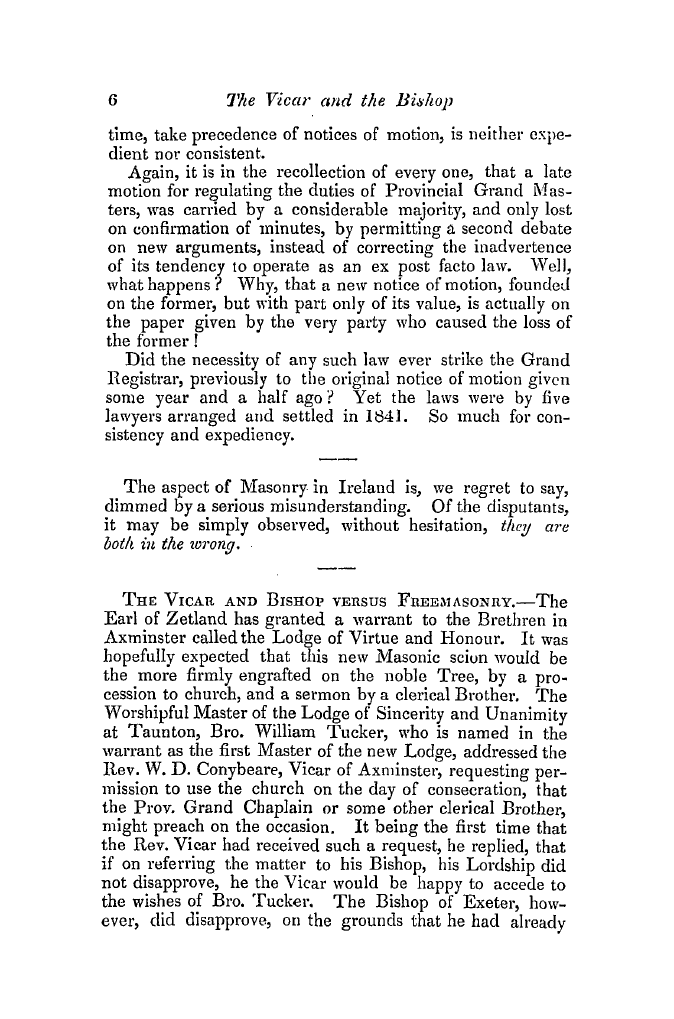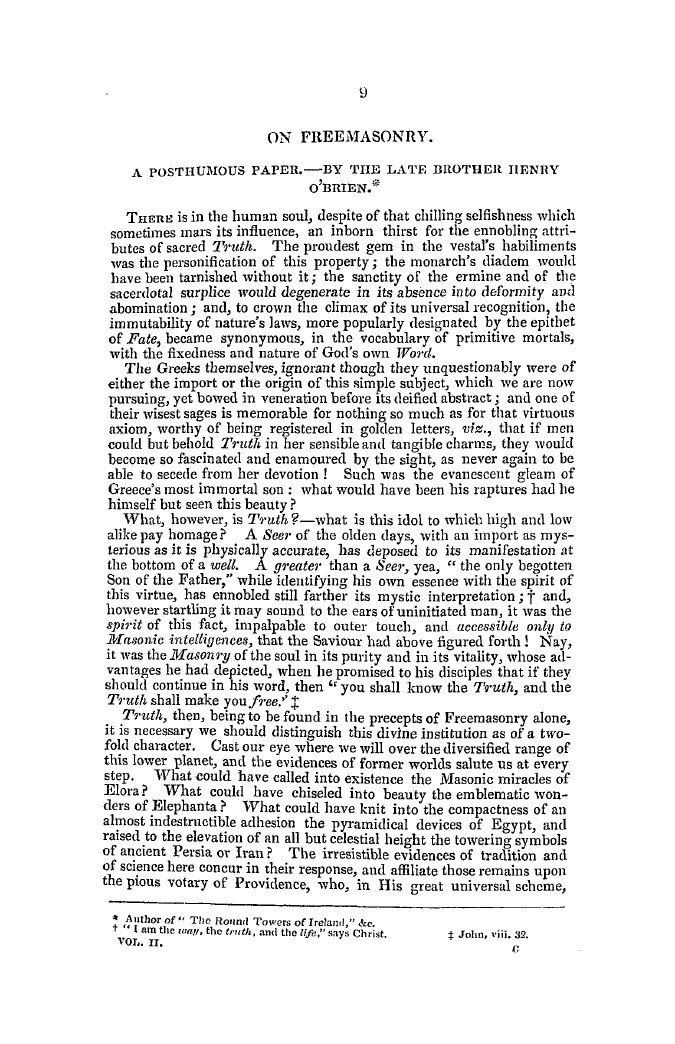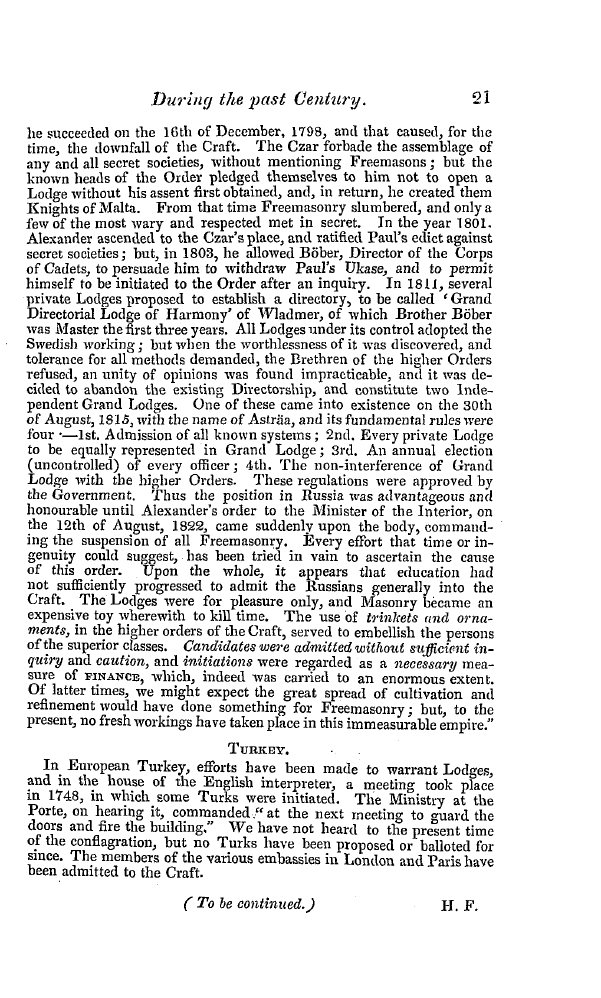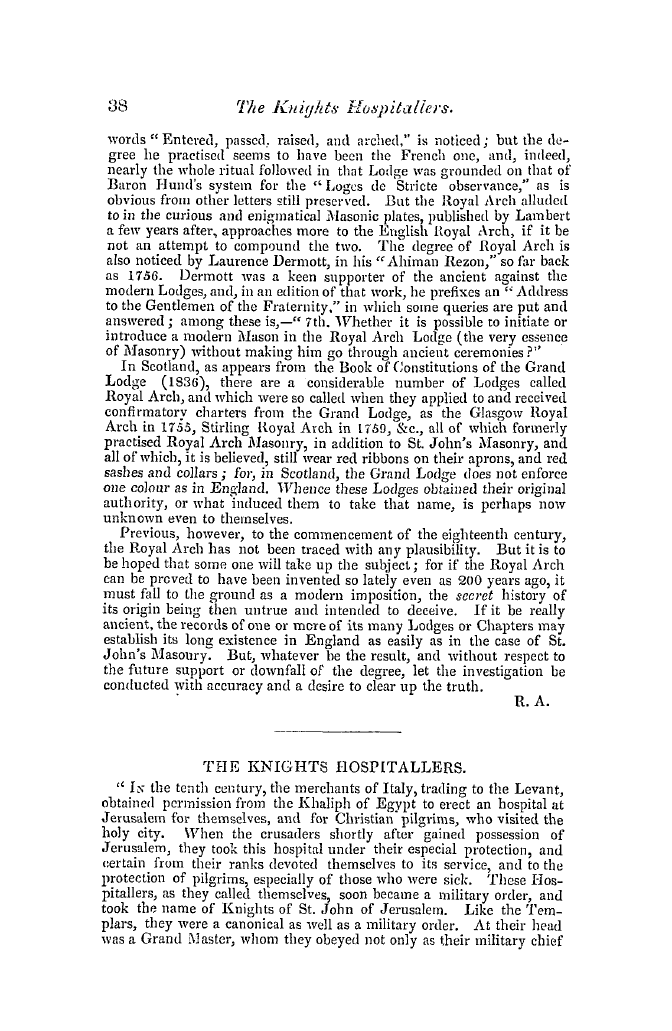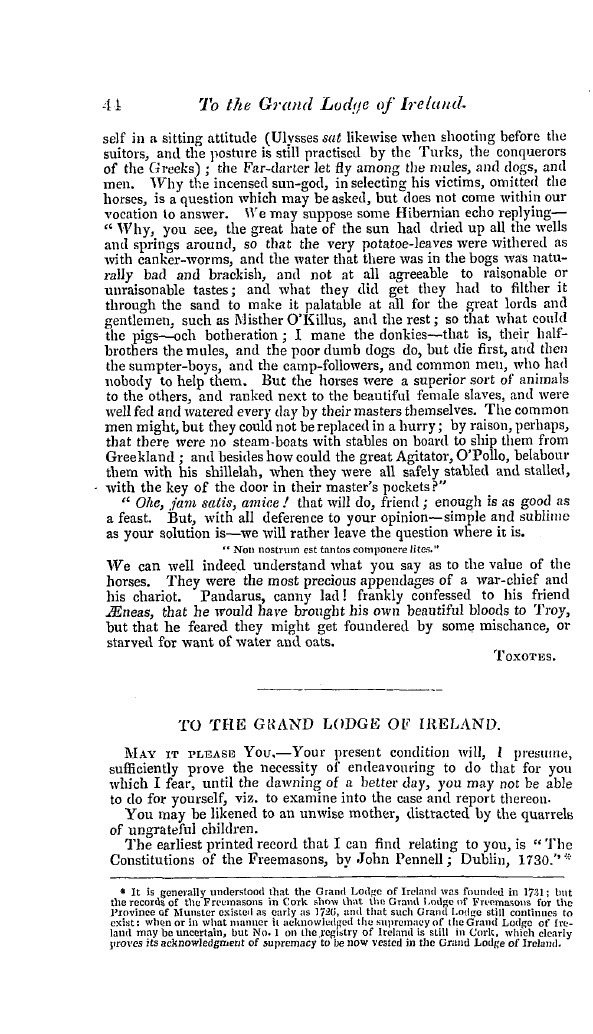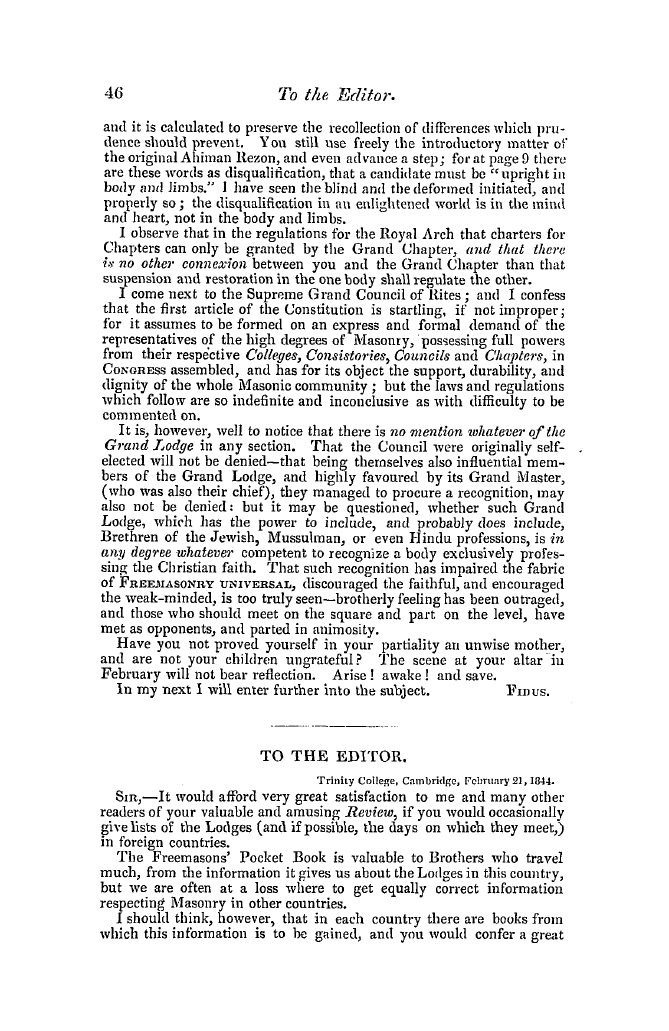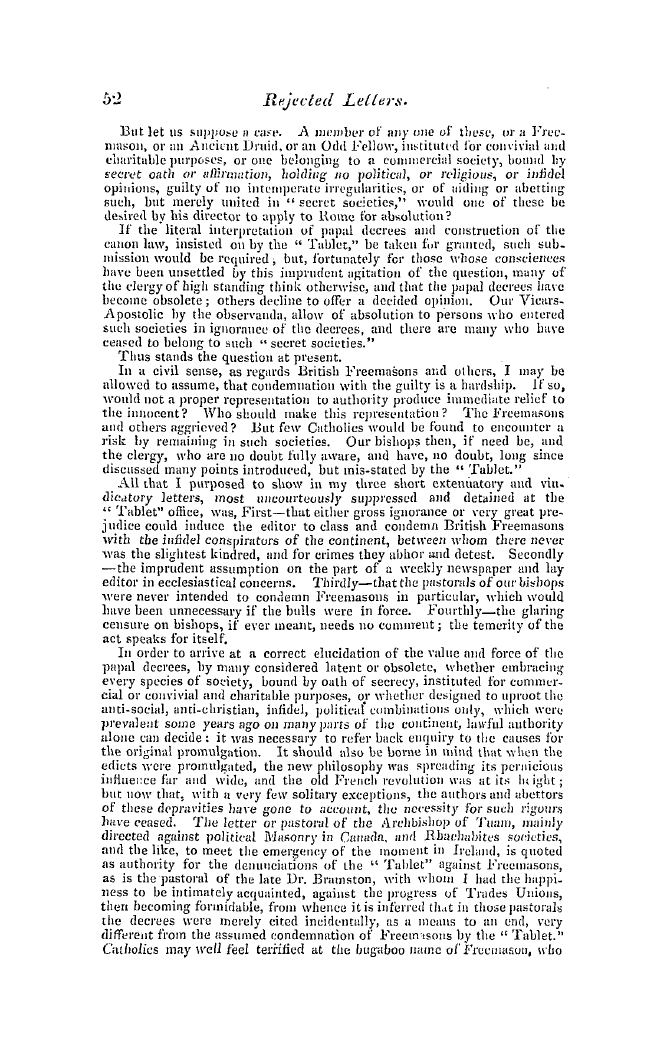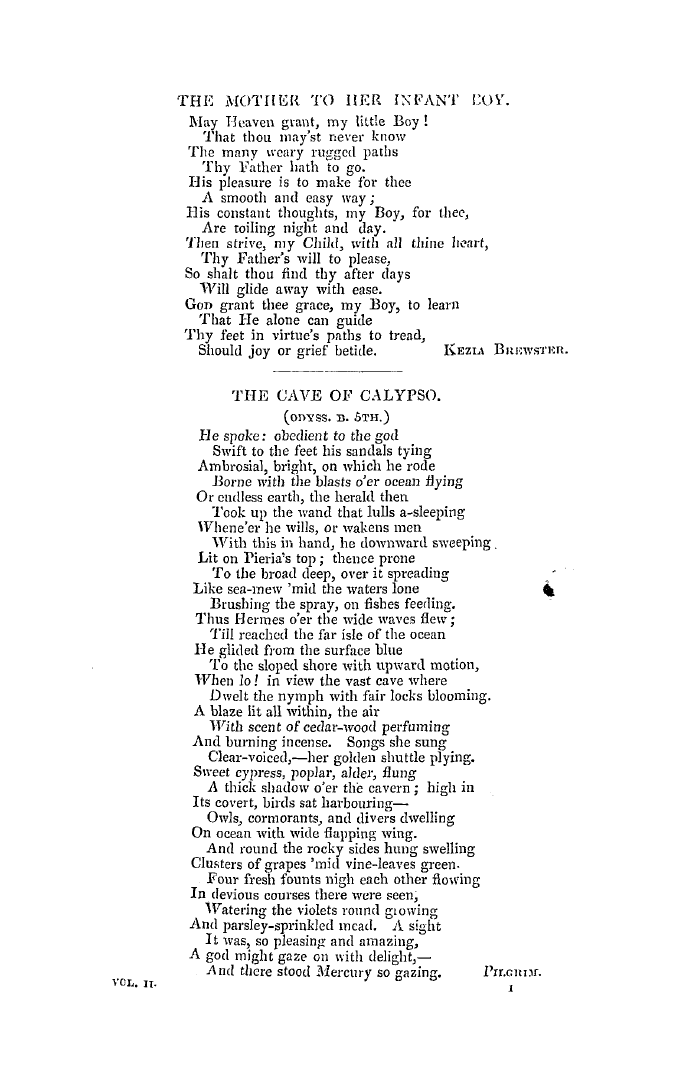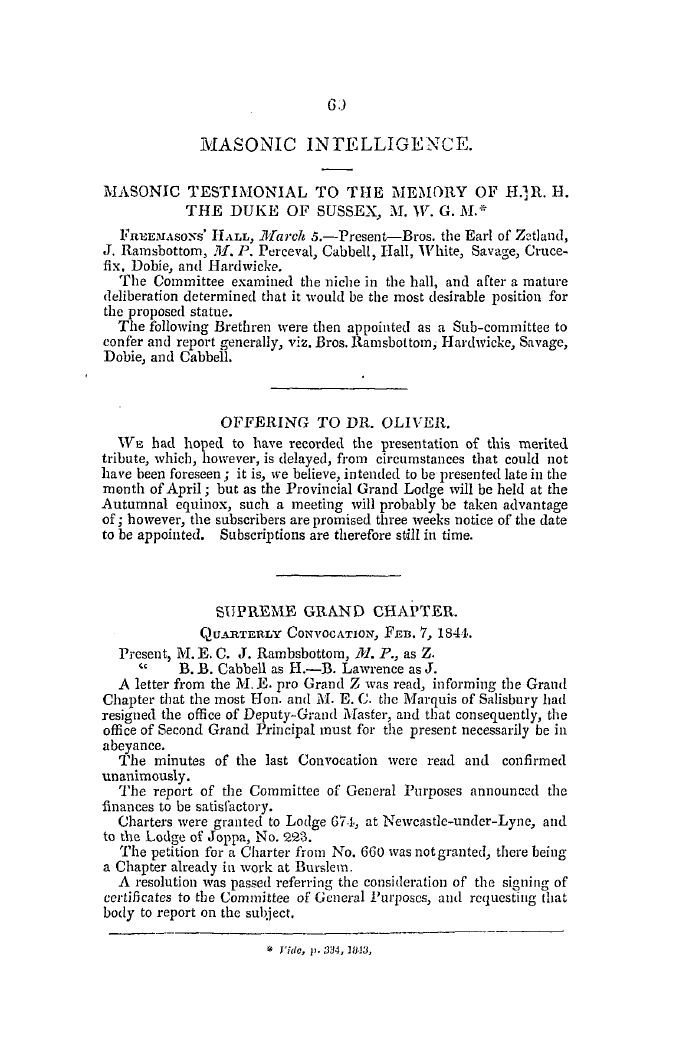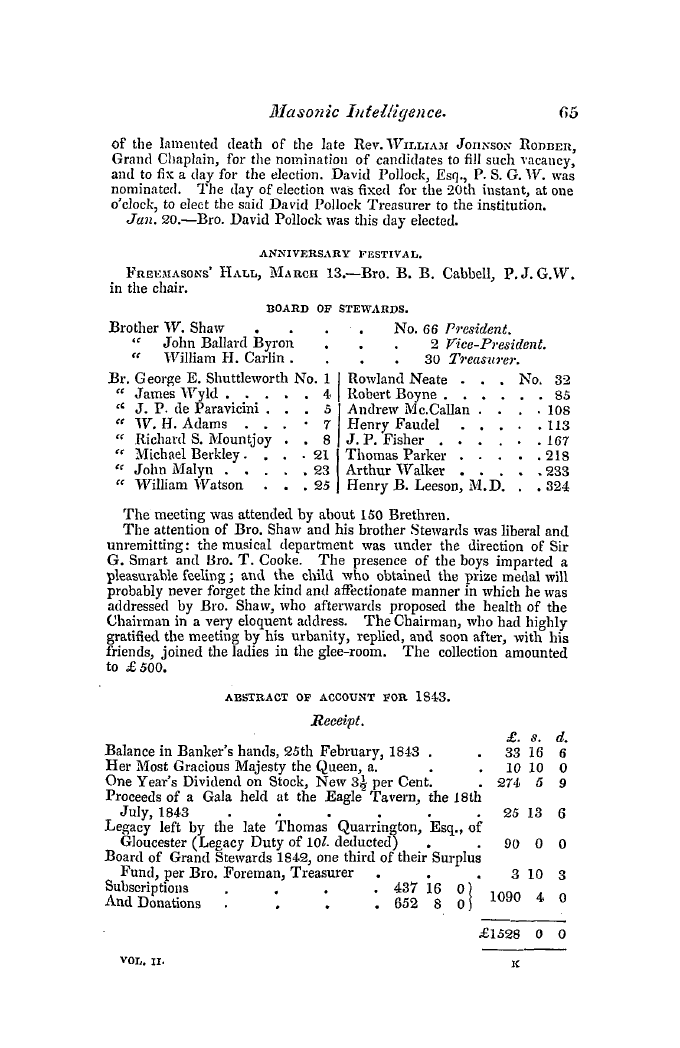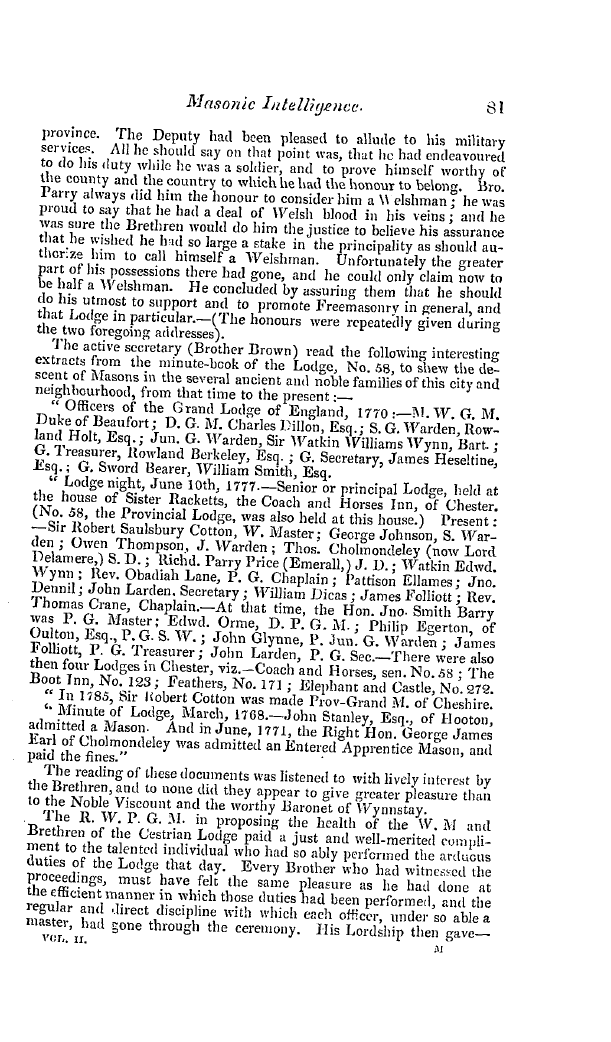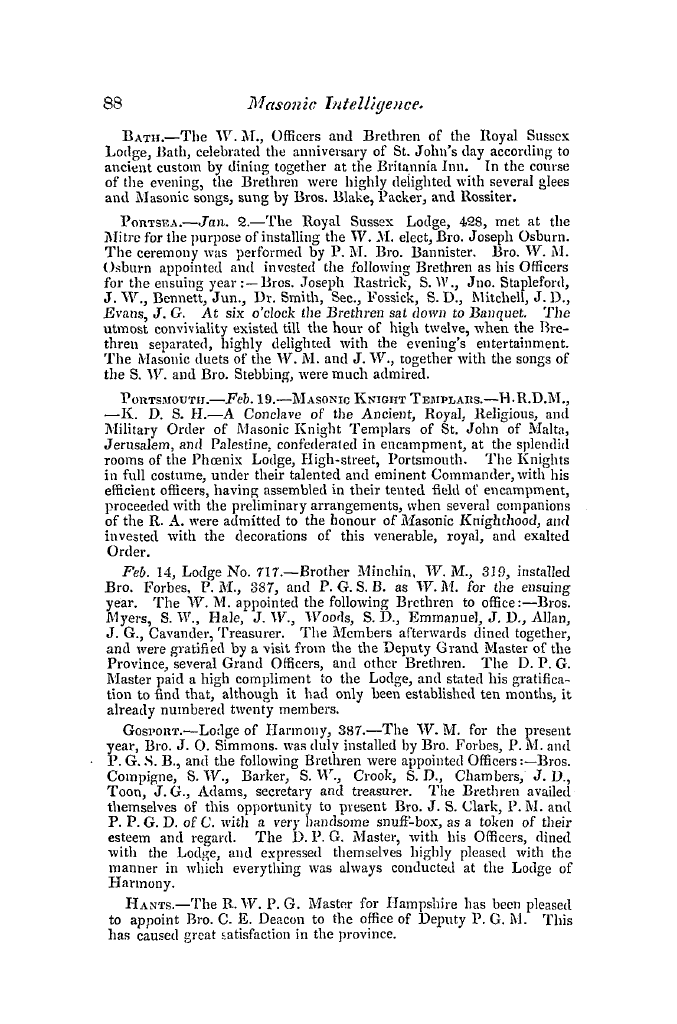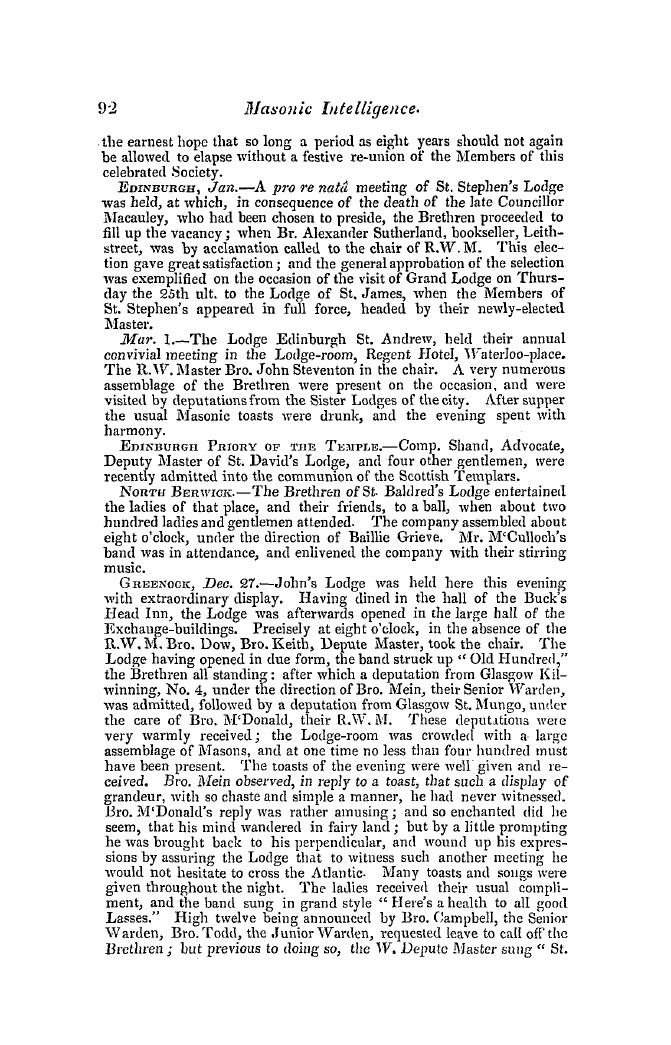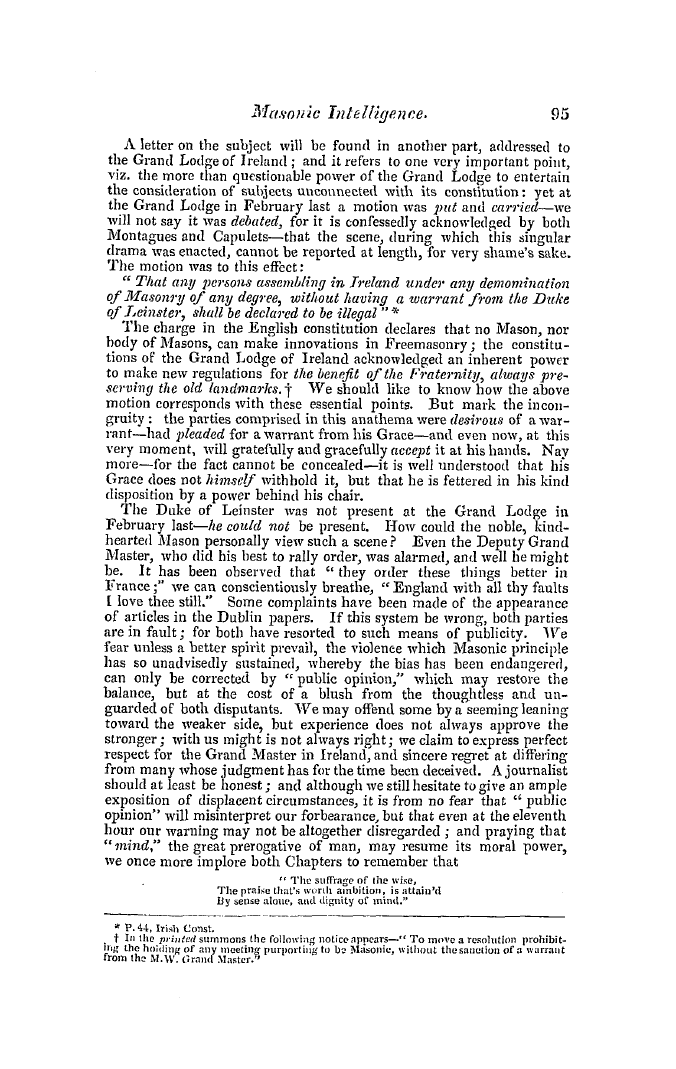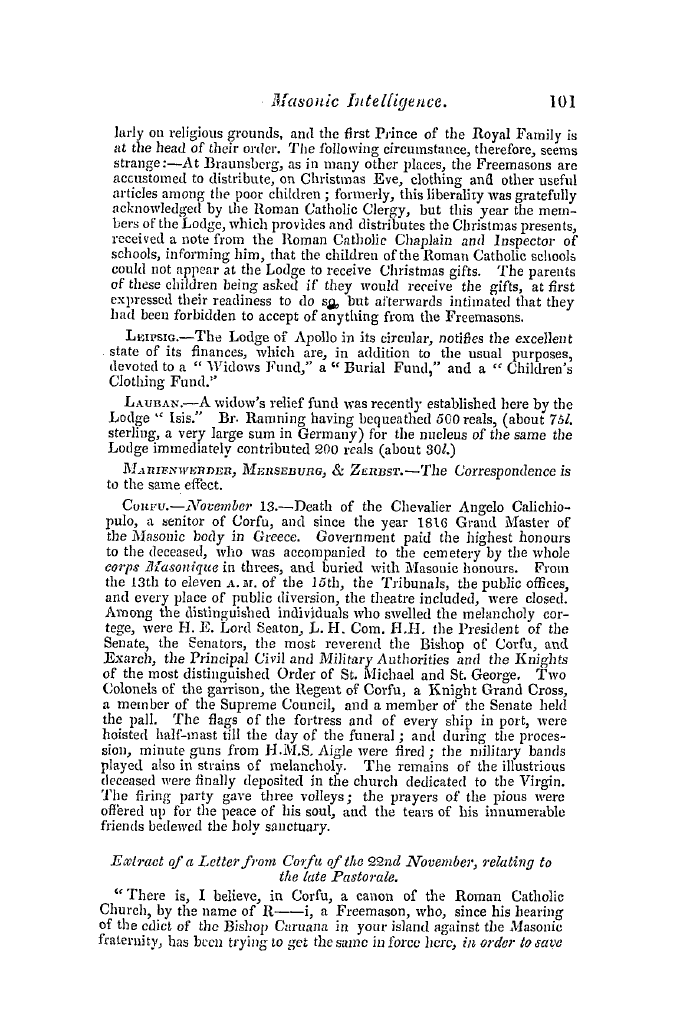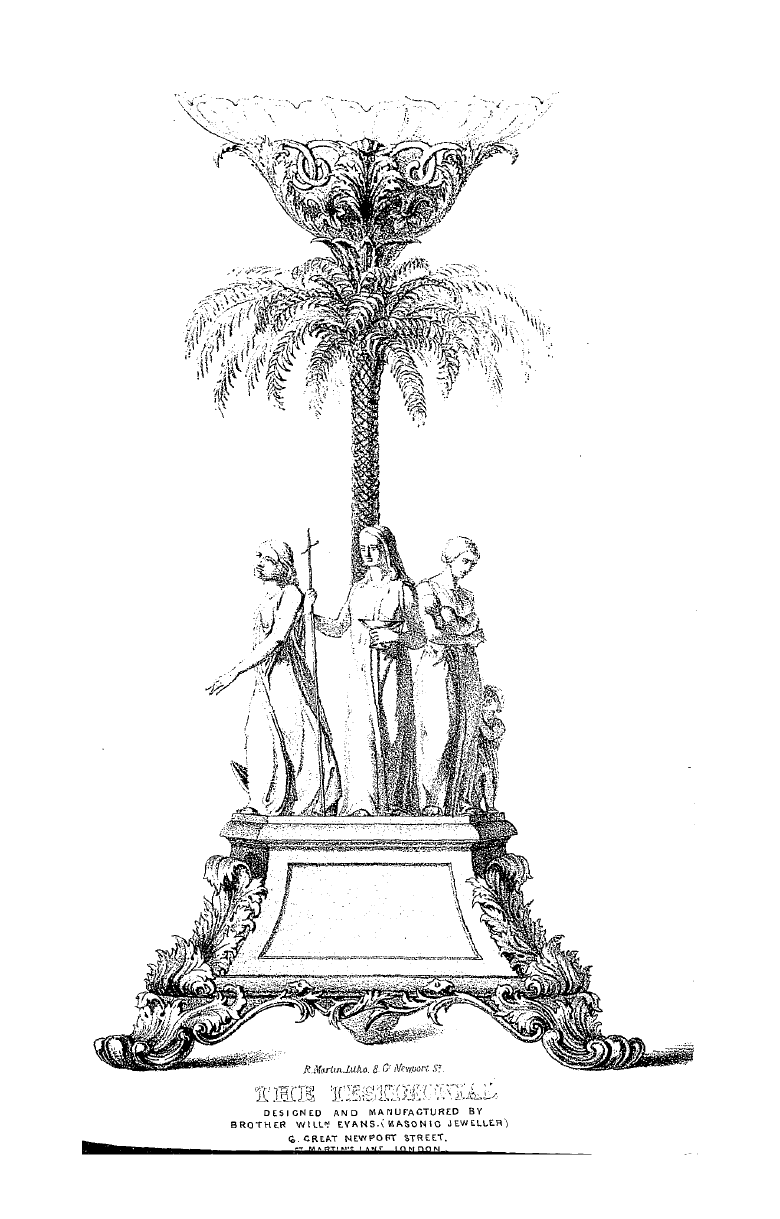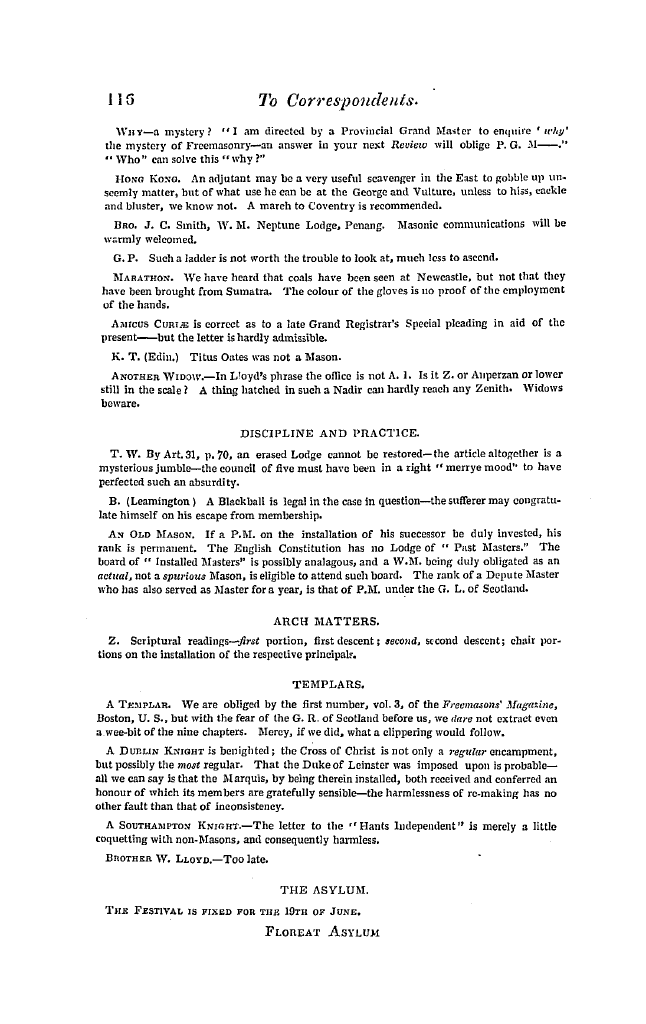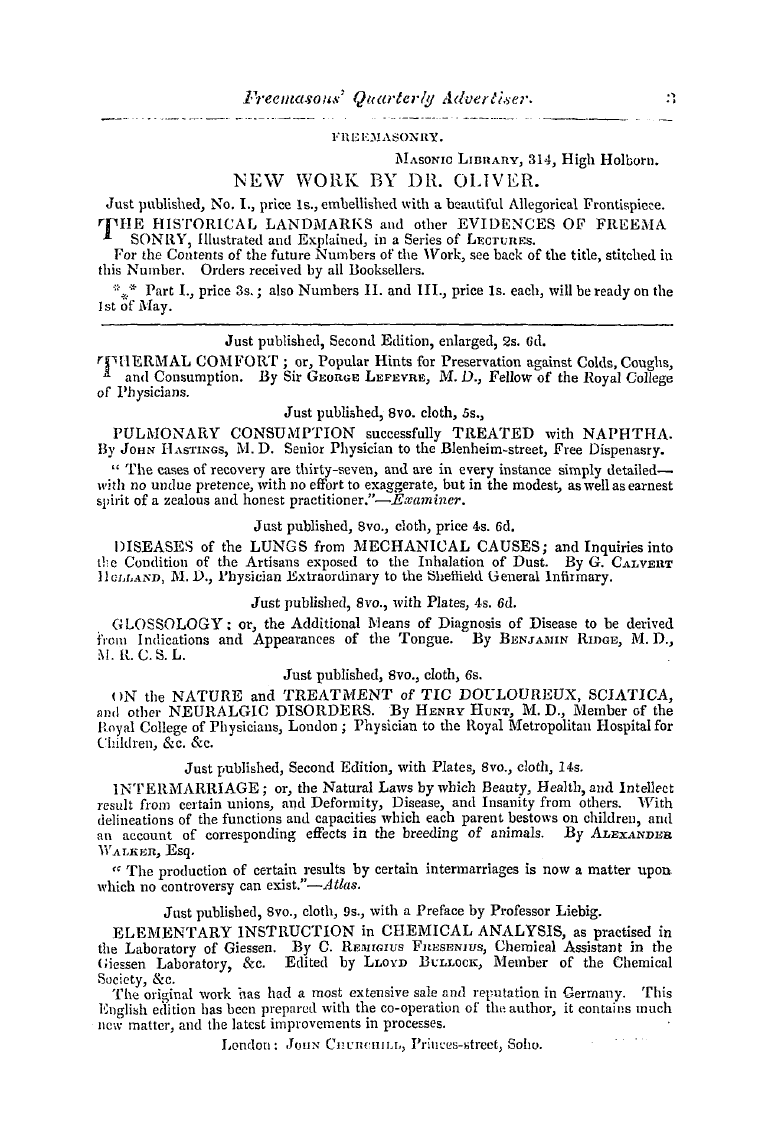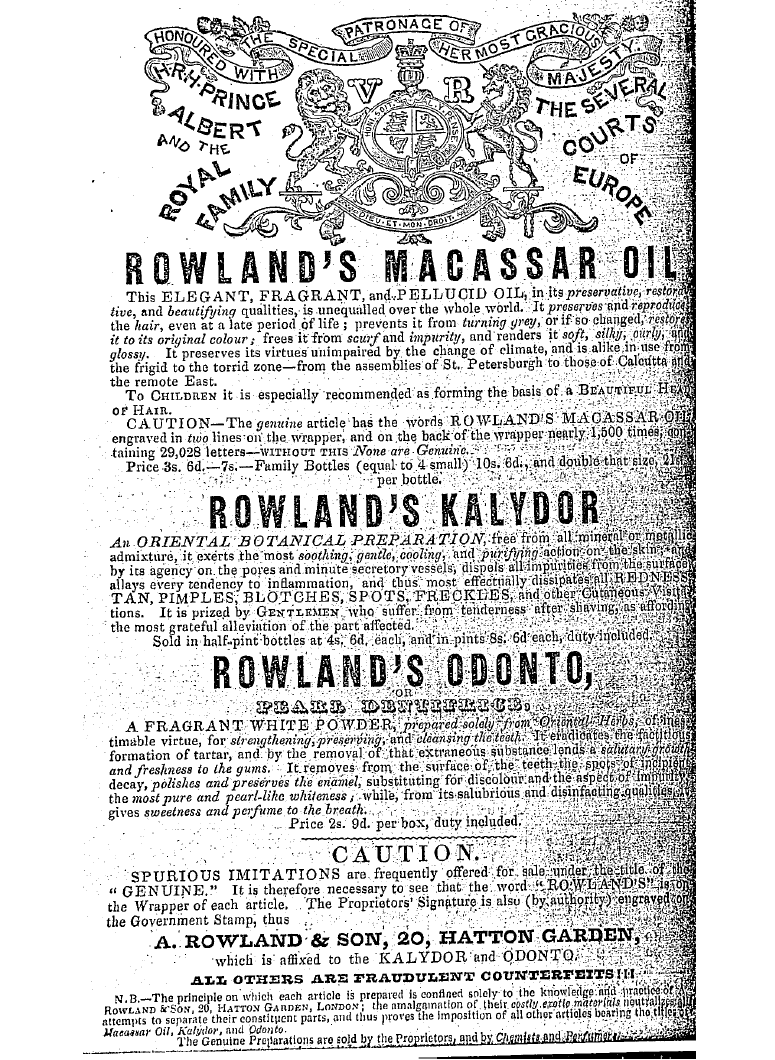-
Articles/Ads
Article ROYAL ORDER. ← Page 6 of 7 →
Note: This text has been automatically extracted via Optical Character Recognition (OCR) software.
Royal Order.
The contents of that patent are not preserved ; and it is doubtful if it was actually sent off . I refer to it only to show that it may be inferred from M . Bocquilon ' s letter , that the Royal Order had been previously practised in France , but irregularly and it is also highly probable that other irregular chapters existed elsewhere abroad . When M . Matheus , of Rouen , applied in 1758 to be made Prov . Grancl Master of France , he antl several others at Rouen appear to have been alreadKnihts of
y g the Order . They must bave been receiveci in France or elsewhere abroad ; at least they were not admitted in Scotland . Another volume in our possession consists of a great many letters addressed to the Order between 1782 and 1817 ; these constitute a most valuable series of documents , ancl were only bound up lately ; formerly they were tied up in bundles without much regularity ; many are therefore lostand the answers almost to none are preserved . The
, earliest letter is dated llth October , 1782 , and is an application for a charter to a Chapter in London ; which , however , as the petitioners coulcl not prove that their system of Masonry ( theirs indeed was similar to that of the Loi / es de la Stride Observance ) , was identical with ours , although embodying the French Rose Croix was eventually refused . I trust I have now satisfactorily proved that M . Clavel , in asserting
that the Grand Lodge of the Royal Order was first instituted in 1785 , had very erroneous information ; there being a regular minute-book from 1779 to 1785 , and documents to prove that a Provincial Grand Lodge and Chapter of England , or South Britain , existed in London in 1741 , when the Prov . Grand Master , alive in 1750 , had been appointed ; that in 1750 these and two other Chapters in London were so ancient , that they themselves could not show their warrants , although they
allowed their authority to have been obtained originally from Scotland . I have only to add to the above , that if the author be a member of the Rose Croix , as commonly practised in France , ancl knows the historical account usually given to the candidate , and will besides consider the words used in proclaiming the title of an entrant into that degree , he will perceive at once that in France the Rose Croix was ( erroneously ) considered to be a mere variation of the H . R . M . antl R . S . Y . C . S . of
the Royal Order ; ancl that H . R . M . is then spoken of , under the name of He ' redom , although that name is totally inapplicable to the Rose Croix of France . Now some rituals of Rose Croix which speak of Heredom , are almost an hundred years old ; so that from this a proof is derived that the name H . R . M . was known ; and perhaps a vague idea of the degrees of PI . R . M . and R . S . Y . C . S . obtained even in France long before 1785 .
R . G . L . T . N . P . S . —In the last number of the Review , at page 574 , a reference is made to " a curious and original tract lately printed , " said to trace the descent of the Rose Croix from Robert Bruce . Where was this tract printed?—what is its name?—and how can the Grand Lodge of the Royal Order of Robert the Bruce obtain two or three copies ? It cannot be the Rose Croixbut one or both of the two degrees of the
; Royal Order that is meant . That these , at one time , existed in Ireland , the Grand Lodge , from the loss of its early records , can neither affirm nor deny . It is probable that in that country , as well as in England , there were formerly a Provincial Grand Lodge and Chapter ; but if so , it seems , as in England , to have been supplanted after the middle of
Note: This text has been automatically extracted via Optical Character Recognition (OCR) software.
Royal Order.
The contents of that patent are not preserved ; and it is doubtful if it was actually sent off . I refer to it only to show that it may be inferred from M . Bocquilon ' s letter , that the Royal Order had been previously practised in France , but irregularly and it is also highly probable that other irregular chapters existed elsewhere abroad . When M . Matheus , of Rouen , applied in 1758 to be made Prov . Grancl Master of France , he antl several others at Rouen appear to have been alreadKnihts of
y g the Order . They must bave been receiveci in France or elsewhere abroad ; at least they were not admitted in Scotland . Another volume in our possession consists of a great many letters addressed to the Order between 1782 and 1817 ; these constitute a most valuable series of documents , ancl were only bound up lately ; formerly they were tied up in bundles without much regularity ; many are therefore lostand the answers almost to none are preserved . The
, earliest letter is dated llth October , 1782 , and is an application for a charter to a Chapter in London ; which , however , as the petitioners coulcl not prove that their system of Masonry ( theirs indeed was similar to that of the Loi / es de la Stride Observance ) , was identical with ours , although embodying the French Rose Croix was eventually refused . I trust I have now satisfactorily proved that M . Clavel , in asserting
that the Grand Lodge of the Royal Order was first instituted in 1785 , had very erroneous information ; there being a regular minute-book from 1779 to 1785 , and documents to prove that a Provincial Grand Lodge and Chapter of England , or South Britain , existed in London in 1741 , when the Prov . Grand Master , alive in 1750 , had been appointed ; that in 1750 these and two other Chapters in London were so ancient , that they themselves could not show their warrants , although they
allowed their authority to have been obtained originally from Scotland . I have only to add to the above , that if the author be a member of the Rose Croix , as commonly practised in France , ancl knows the historical account usually given to the candidate , and will besides consider the words used in proclaiming the title of an entrant into that degree , he will perceive at once that in France the Rose Croix was ( erroneously ) considered to be a mere variation of the H . R . M . antl R . S . Y . C . S . of
the Royal Order ; ancl that H . R . M . is then spoken of , under the name of He ' redom , although that name is totally inapplicable to the Rose Croix of France . Now some rituals of Rose Croix which speak of Heredom , are almost an hundred years old ; so that from this a proof is derived that the name H . R . M . was known ; and perhaps a vague idea of the degrees of PI . R . M . and R . S . Y . C . S . obtained even in France long before 1785 .
R . G . L . T . N . P . S . —In the last number of the Review , at page 574 , a reference is made to " a curious and original tract lately printed , " said to trace the descent of the Rose Croix from Robert Bruce . Where was this tract printed?—what is its name?—and how can the Grand Lodge of the Royal Order of Robert the Bruce obtain two or three copies ? It cannot be the Rose Croixbut one or both of the two degrees of the
; Royal Order that is meant . That these , at one time , existed in Ireland , the Grand Lodge , from the loss of its early records , can neither affirm nor deny . It is probable that in that country , as well as in England , there were formerly a Provincial Grand Lodge and Chapter ; but if so , it seems , as in England , to have been supplanted after the middle of









